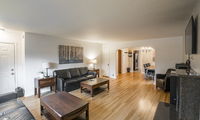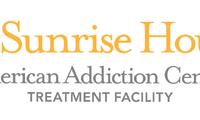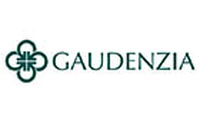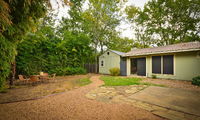Club Drugs Addiction Treatment
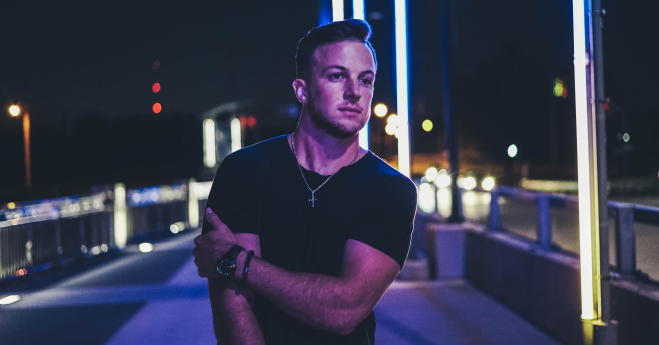
Club drugs are psychoactive drugs most often abused by teens and young adults at party atmospheres of all kinds. They help the user feel more open and intimate, yet distant or disassociated from the pains in their lives they’d rather ignore. This is what adds to the allure of club drugs and what makes them easy for the user to abuse.
But underneath, the drugs are damaging their organs and segments of the brain responsible for judgement, memory, coordination, and senses. If your loved one is taking club drugs and has developed an addiction, they need help before it’s too late.
Club Drug Evolution
The term club drugs originated with the rave scene, becoming synonymous with using mind-altering party drugs to enhance an already mind-blowing setting--a backdrop of pulsating music and a barrage of stimulating lights.
Some describe it as feeling the vibrations of everything and everyone run through you. There is a sense of euphoria and closeness with the various energies.
The popularity of club drugs caused them to sweep across to party scenes of all types--no longer unique to raves--and blow out age boundaries as they are more likely to be used by pre-teens, teens, and young adults.
Along with that sweep came a need to cater to millenials who are constantly trying to stay on-trend and find what’s new. This has lead to an evolution of new club drugs entering party atmospheres every year.
It’s not that the drug category has changed, it’s that designers making the drugs experiment with recipes, triggering a variation of the original form, often by lacing it with other chemicals and chemical drugs. They’re strong and set off a series of reactions in the body.
This is why club drugs are also known as designer drugs.
Party Drugs List
Club drugs, or designer drugs, can be smoked, inhaled, injected, or ingested. Powder forms eliminate the use of a needle, but are long-lasting and can be odorless, colorless, and tasteless.
They can go by various names, including:
- GHB -- Liquid Ecstacy, Grievous Bodily Harm, G, Georgia Homeboy, Easy Lay, Liquid X, Liquid E, Gibb, G-riffic, Date-Rape Drug
- Ketamine -- Special K, Vitamin K, Cat Valium
- Amyl Nitrates -- Rush, Aroma of Man, Poppers, Hardware
- MDMA -- Lover’s Speed, XTC, Molly, Ecstasy, Adam, MD
- Rohypnol -- Ruffies, Roofies, Rohepnol, Roche, Forget-Me Pill, Roaches
- LSD -- Acid, Blotter, Dots
- Methamphetamine -- Crystal, Crystal Meth, Speed, Meth, Ice, Crank, Tina
- Methylphenidate -- Ritalin, Skippy, Vitamin R, R-ball
- Inhalants -- Whippets, bagging, huffing
- PCP -- Angel Dust, TAC, Hog, Love Boat, Elephant Tranquilizer, The Sheets
- Synthetic Cathinones -- Bath Salts, Vanilla Sky, Ivory Wave, Purple Wave, Bliss
- Cocaine -- Coke, C, Blow, White Girl, Snow, Flake
- 251-NBOMe -- N-Bomb, Solaris, Wizard, Smiles
Some present a glossy streets names like Love Boat, Tesla or 2C-B, while others describe the drugs by the experience some users face like Grievous Bodily Harm, Date-Rape or Forget-Me Pill. Whether they sound sweet or downright like a bad night, they all cause short-term and long-term effects on the user.
Signs of Club Drug Addiction
It is often thought that club drugs aren’t addictive because the user only uses in club settings. But club drug use is not confined to the “club”, per say, these designer drugs are being taken at concerts, house parties, bars, festivals, and other recreations. This means more opportunities for use, and thus addiction.
Club drug addiction is described as a dependency on club drugs, where the user relies on them both in and out of social environments. They’ve also built a tolerance to the substance, using more quantities of the drug than when use first began and for longer periods of time. He may spend an inordinate amount of time to get hold of the drug, often neglecting certain activities or people to get it, and then committing that same energy and time to getting high. Despite the toll the substance(s) has had on her life, use continues and becomes a priority, taking precedence over social and personal responsibilities.
Following use, when the high has come down, he may spend hours recovering and experiencing a host of after-effects associated with withdrawal:
- Trouble sleeping
- Body tremors
- Anxiety
- Profuse sweating
- Nausea and vomiting
- Abdominal cramps
- Depression that can lead to suicide
- Gastroenteritis
- Irregular breathing
- Overeating or undereating
Effects of Club Drugs on the Body
Upon use, drugs enter the bloodstream, flowing through the circulatory system, taxing it by causing autonomic functions like respiration, body temperature, heart rate, and blood pressure to speed up or slow down.
As the drug-laden blood courses through the veins, the substances eventually break the blood brain barrier, where they lock onto the brain’s receptor neurons and hijack them. Neurons are the cells responsible for motor muscle command, receiving sensory output from the outside world, and receiving, processing and transmitting information through electrical and chemical signals known as neurotransmitters.
Neurotransmitters themselves regulate mood and emotions, enhance pleasure, and are responsible for rewards, reinforcing behaviors, motivation, attention, stress relief, energy levels, and speed of the central nervous function.
Club drugs disrupt neurotransmission and autonomic functions, resulting in acute and chronic side effects.
Acute and Chronic Dangers of Club Drugs
Because club drugs are often produced on the street, in makeshift laboratories, there is no way for the user to predict what chemicals are involved and how they will react in their body. Drugs can vary greatly from designer to designer, and even then the recipe or effects aren’t guaranteed to present the same way during the next high.
Contaminants found in designer club drugs can increase toxicity. Some may be stronger, making it possible for a single dose to have fatal consequences in an otherwise healthy young adult.
Whether addicted, using occasionally, or using once, designer drugs can produce negative short-term effects like:
- Agitation
- Thoughts of suicide
- High blood pressure
- Rapid heartbeat
- Amnesia
- Fatigue
- Delirium (hallucinations, delusions, and paranoia)
- Difficulty paying attention
- Impaired capabilities
- Risky behavior/poor decision-making
- Distorted perception
- Psychosis
- Dizziness
- Irritability
- Nervousness
- Depression
- Clogged, runny nose
- Dehydration
- Teeth grinding
- Chest pain
- Heart palpitations
- Loss of consciousness
With continued and chronic use come more susceptibility to chronic health dangers. They may present with any of the following:
- Significant weight loss
- Malnutrition
- Heart attack
- Stroke
- Brain damage
- Fluid buildup in the lungs
- Trouble breathing
- Seizure
- Coma
- Overdose
- Death
- Organ failure
- High blood pressure
- Psychosis
- Tremors
- Difficulty speaking
- Nerve damage
- Deteriorating muscle
- Collapsed veins
- Bacterial infections of the blood vessels and heart valves
It should be noted that while we’ve separated these as short-term and long-term effects, any number of these symptoms can occur at any time during use.
Club Drug Treatment Options
Treating club drug addiction calls for a three-pronged approach: detox, residential treatment, and outpatient treatment. All work together to improve the success rate of you or your loved one getting clean. Skipping any one of these crucial steps can lead to relapse. Here’s why:
Detox
Upon withdrawal from club drugs, the user’s body goes through violent symptoms as it tries to purge itself of the substances and cope without them--drugs cause body chemistry to change and over time the body comes to rely on the substances for its makeup.
When the body goes without the drugs for a certain period of time, the body can display a host of manifestations that are not only painful and discomforting to the user, but potentially deadly. This is why the detox process should occur in a safe, monitored facility with trained staff who are equipped to safely wean the user off drugs.
They understand the challenges of detoxifying off club drugs, one of which is addressing multiple substances at once--designer drugs contain a combination of chemicals and toxins. Trying to detox alone can quickly lead to relapse as the user often turns to using in the thick of severe withdrawal symptoms.
Detox can take anywhere from days to weeks, depending on the substances and the severity of the addiction, and occurs in a medical setting where your loved one is monitored, medicated, and stabilized under 24/7 watch. This program may be a stand-alone or incorporated into a rehab facility that follows up detox with inpatient/residential treatment.
Residential Treatment
After your loved has safely detoxed, he should be moved into inpatient treatment to continue the work of reaching total sobriety. This may take 30-90 days or longer, depending on the treatment facilities protocols, the severity of the addiction, whether rehab has been attempted before, and whether a co-existing mental health condition is present.
Because club drug addiction is considered a mental disorder that stems from an underlying issue, residential treatment centers have psychologists, addiction counselors, and other professionals who work to surface the underlying connection to drug abuse.
With the problem visible, medical professionals can provide therapy, and with triggers better understood, deliver life-saving tools to help them remain sober once they’ve finished the final stage of treatment.
Over your loved ones stay, he can enjoy:
- 24-hour nursing supervision
- Introduction to 12 Step programs or similar step programs
- Comprehensive evaluation and treatment planning
- Medication management
- Psychiatric therapy (one or more times a week)
- Daily group therapy
- Individual therapy
- Recreational therapy (e.g. gym, pool, meditation, and yoga)
- Aftercare and discharge planning
Through this work, addicts usually develop insights about what led to addiction, are helped to close painful chapters of their lives that started or fed addiction, realize triggers, mend broken social bonds, and accept tools and group support they can use in their “outside” world to prevent relapse.
Outpatient Treatment
Outpatient treatment picks up where residential inpatient treatment left off. It is less intensive, allowing your loved one to come to the facility for a scheduled number of hours per day or week, then return home after their session is over. This allows him to keep commitments to work, family, and other responsibilities.
For this reason, outpatient care is not recommended for those with strong, active addiction. It does not assist with detox and withdrawal, nor provide the intensive therapy one would find at a residential treatment center. Rather, it is designed to further and solidify the work done by inpatient professionals.
This makes outpatient treatment best for those who’ve already had inpatient care and are stable enough to go without 24/7 supervision. Skipping steps is not recommended, but outpatient care may be suitable for some with mild club drug addiction to enter this gate first.
Programs come in different formats and levels of intensity and offer such services as:
- Ongoing therapy
- Biofeedback
- Group counseling
- Adjunct therapies like art and music
That said, the main focus is on counseling, relapse prevention techniques, step programs (e.g. 12 Steps), and creating a network of support systems to not only hold him accountable but keep him on track.
Club Drug Recovery
After your loved one has completed rehab, she will enter into a series of important recovery stages.
Early Recovery: Up to 3 Months
This period covers the first three months into recovery. Assuming your loved one will go through detox and an inpatient care facility that has a stay of 90 days, he will be fully supported over this stage with an addiction team.
If the inpatient care program is only 30-60 days, several challenges can be in your loved one’s wake. He will be re-entering his “real world”, an environment where he has access to people and things that once fueled his addiction. This makes him more vulnerable to relapse.
Outpatient treatment should therefore be a natural follow up and next step to cover the remaining days in the early abstinence period. While it does mean that when he is not at the facility, the responsibility weighs on him to remain sober, there are aides at his dispense.
Mid-Stage Club Drug Recovery: 4 Months to 1 Year
Relapse is most likely to occur within the first 90 days of recovery, with the relapse rate being between 40 and 60 percent. Even if she makes it passed the 90 days, she will still have an uphill battle.
The same challenges that she had in early recovery are present, but to a lesser degree. She is more adjusted to life without club drugs. However, this is where users usually become overly-confident, feeling like they have the willpower to hang in old circles and environments without falling into temptation.
Before she knows it, she back into the arms of addiction and re-entering rehab.
To keep sobriety on track, she should continue to avoid triggers in her environment and implement coping mechanisms she has worked out with her addiction team to cope with stressors.
Late-Stage Club Drug Recovery: 1 Year and Up
Congratulations! This is a time for celebration. If your loved one has made it to the first year clean, he is another leap closer to achieving lifetime sobriety. He should continue the work and using the tools that have helped him make it this far.
Club Drug Recovery Quick Tips
Addiction is a disease, and sobriety requires a daily, weekly, monthly, yearly commitment. The more tools she has under her belt, the better. Here are a few tips to help you or your loved one ensure sustained recovery.
- Plan out a weekly schedule. This schedule should be filled with reasonable tasks your loved one can accomplish each day, like work, cleaning house, caring for children, and attending 12-step meetings.
- Attend 12-step meetings. To help get through the tough transition period, he should attend regular 12-step meetings, approximately three times a day for the first few weeks, then fewer times as he becomes more capable.
- Find a sponsor. In the 12-step meetings, your loved one should work hard to make connections with individuals who head the group and participate in the group sessions. He can find a sponsor who is more advanced in their recovery and who can share their successes and failures on a deep, individual level. This sponsor can then check in with your loved one to ensure he is staying on track or be there to mitigate temptations when they arise.
- Continue to see a psychotherapist. Sponsors are a great addition, but they are not trained to handle the many fluctuations your loved one is going through, nor is it healthy for them to carry the burden when they are trying to recover themselves. A psychotherapist needs to be part of his overall treatment plan, as the professional is more capable of recognizing and handling the medical and psychological aspects of addiction.
- Refrain from going to old hangouts. If his first 60 days or more have gone well, it’s easy for him to assume that he has enough self-control to go to party atmospheres where he once used club drugs. But the previous neuropathways between addiction and pleasure are still present. Staying away from old hangouts will reduce temptations.
- Establish healthy relationships. Personal bonds are big in our lives. We are wired to make connections with others. However, not all connections are healthy. Those who have had the greatest success with sobriety develop relationships with people who are just as committed to staying clean as they are, or with those who’ve never had an addiction but are strong, positive motivators in their lives.
- Get enough rest. When the body is deprived of sleep, stress levels rise and our judgement is clouded. Stress is a known trigger for relapse.
- Work out. Exercising is a great stress-reliever and mood-booster.
If you or someone you care about is currently in the throes of substance addiction, remember that quitting doesn’t have to be a difficult, solitary effort. Browse our directory treatment centers that specialize in club drug rehabilitation or call 800-772-8219 to learn about recovery options in your area.





